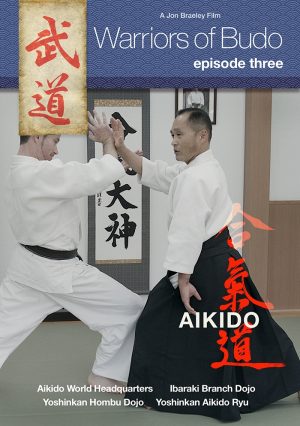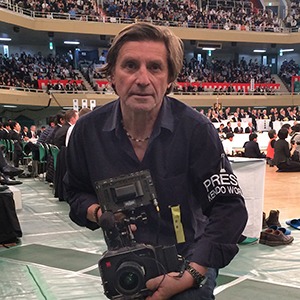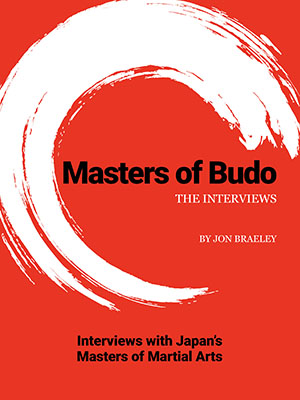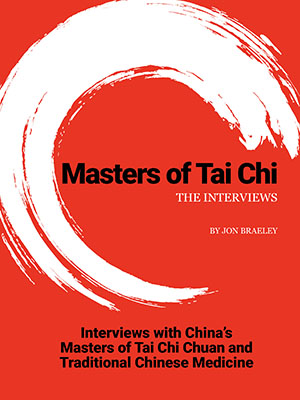Introduction
For some time I have thought about writing a post to answer the comments we receive on social media when we publish an aikido video. It seems to me that aikido is misunderstood by so many of todays younger generation. Then a few days ago I received an email from the celebrated Shakuhachi musician, Christopher Yohmei Blasdel, regarding my recent post on the 20th anniversary of our first interview with Moriteru Ueshiba. This prompted me to finally write Aikido: Unleashing Peace in Combat…

Moriteru Ueshiba teaching at the Aikikai Hombu Dojo. 2013
A Brief History
The founder of Aikido, Morihei Ueshiba was born in 1883, the son of Yoroku Eueshiba, a successful farmer. As a child, he was enrolled at a nearby Shingon Buddhist temple. In the early 1900’s he began practicing martial arts – jujutsu and kenjutsu. His father encouraged his son’s martial arts practice, even building a family dojo and hiring a Kodokan sensei to also teach him judo. A start we would all wish for in our martial art journey!
After his fathers death in 1920, Morihei Ueshiba was so grief stricken that he went into seclusion for many years in Ayabe, near Kyoto. Here, he sought a spiritual path under the Omoto-kyo sect. He also resumed his martial art practice, building his strength and teaching Omoto-kyo followers Daito-ryu jujutsu. At the same time he took responsibility of farming the land at the temple, developing a belief that agriculture and aikido had an essential unity or bond. Attaching simple pursuits like growing crops, to his love of aikido would become a recurring theme in his life.

Jon Braeley filming at the Aiki Shrine (statue of O’Sensei in the foreground). 2014
In 1922 Morihei Ueshiba broke away from Daito-ryu jujutsu and established what he called, Aiki-bujutsu. In 1925, he so easily defeated a kendo master in a challenge, that he experienced a revelation while washing by a well shortly after the encounter. He experienced his self and the universe become one and his vision for what he now called aiki-budo was born – the “martial way of harmony.” His martial art spread quickly and in 1931, a dojo was built – the Kobukan, on the site that remains today as the Aikikai Hombu Dojo in Wakamatsu-cho in Tokyo. By the 1930’s at the age of 50, Morihei Ueshiba was the most famous martial arts master in Japan. Much of this acclaim was how he had created the union of spirit, mind and body into his art of aiki-budo.
In 1941, Morihei Ueshiba moved to the countryside of Iwama, to build a shrine and an outside dojo which would become known today as the Ibaraki Branch Dojo. It was here, away from the ravages of the Second World War, where he farmed and grew crops, prayed and meditated at the Aiki shrine and perfected his martial art, which he now called Aikido – “The way of harmony and love.” With the World mired in conflict, Ueshiba chose to take aikido on a path of peace.
The aikido itself has not changed. What has changed from when the founder Morihei Ueshiba taught aikido and what is taught today is the environment, of life and society.
Aikido as a Martial Art
Aikido has gained popularity worldwide, captivating enthusiasts with its elegant technique and philosophy of harmony. As with most martial arts, popularity is a double-edged sword and where there was once one school or style – now there are now many. The two most prominent are the Aikido founders original school, Aikikai run by Aikikai Foundation, and the Yoshinkan Ryu, founded by Gozo Shioda, Ueshiba’s chief disciple. Lesser known schools are Iwama Ryu and Shodokan Ryu.
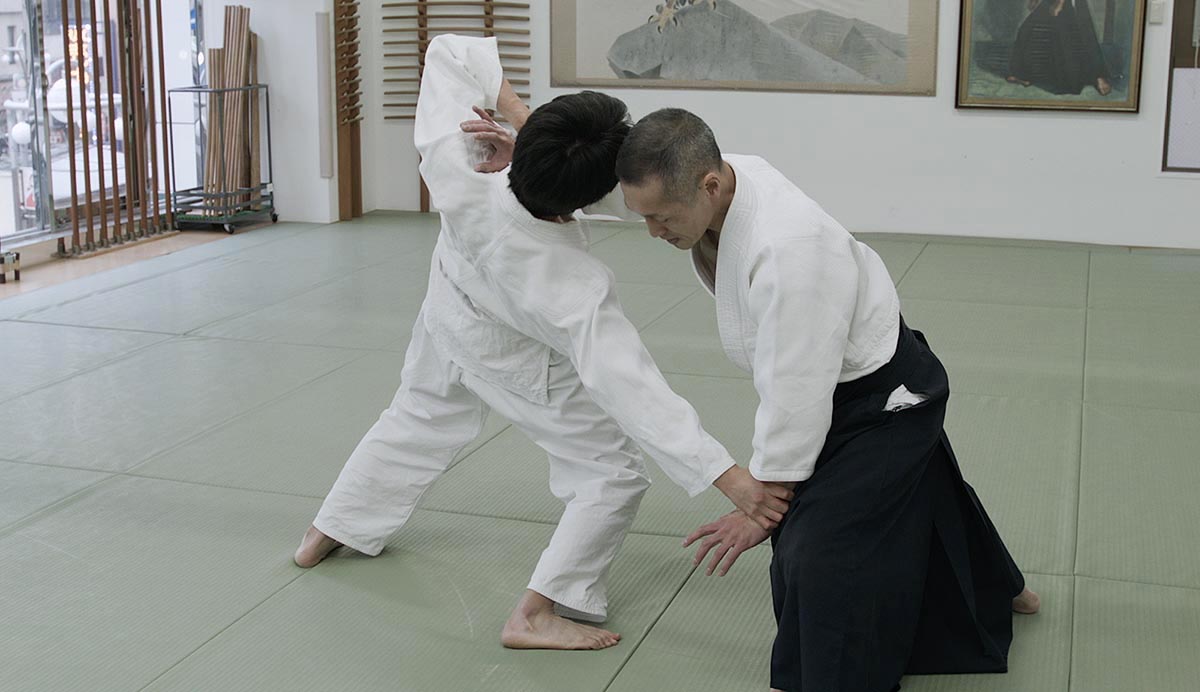
Chino sensei teaching at the Yoshinkan Hombu Dojo. 2014
Each style carries its own distinctive characteristics, emphasizing different aspects of aikido practice. The flowing movements of Aikikai, the precise techniques of Yoshinkan, the focus on weapons training in Iwama Ryu, and the competitive or sport aspect of Shodokan. Beyond these recognized schools, there are also numerous independent dojos and instructors who have developed their own unique variations of aikido. These variations often reflect the personal experiences and insights of the practitioners, adding further depth to the aikido landscape.

Moriteru Ueshiba teaching at the Aikikai Hombu Dojo. 2013
By far the most popular aikido is Aikikai, a term used to describe the founder, Morihei Ueshiba’s style, which is now led by his grandson, Moriteru Ueshiba, who became the third “Doshu” (Leader of the Way) after the death of his father, Kisshomaru Ueshiba. Aikikai is very much a family affair. During one of my visits to the Aikikai Hombu Dojo, Doshu took me to the second training room to meet Mitsuteru, his son. In his twenties at the time, Mitsuteru was already teaching regular classes and it was clear he was being groomed to one day take over the Aikikai Foundation. The following is the definition to describe aikido by the foundation: “Aikido is performed by blending with the motion of the attacker and redirecting the force of the attack rather than opposing it head-on. Aikido has no competitions. The goal of Aikido training is not perfection of a step or skill, but rather improving one’s character according to the rules of nature”.

Director Jon Braeley filming the 6.30am class of Moriteru Ueshiba, Aikikai Hombu Dojo. 2014
Aikido Beyond Martial Arts
It is evident through my talks with Doshu, that the founders vision for Aikido is just as strong today. In transforming his martial art from aiki “jutsu,” (focused on deadly technique), to one that uses non-violence to end confrontation. This lies at the core of Aikido – through practice with a partner, you find harmony, inner peace and strength or Aiki.
I have interviewed Moriteru Ueshiba three times. The first interview, which you can read here, is from our 2003 movie, The Empty Mind. In an interview in 2014, I asked him what is Aikido? He answered, “The founder Morihei Ueshiba defined it that through the spiritual pursuit of practicing bujutsu or budo, from this spiritual training one can become ‘one’ with the universe. This becoming ‘one’ is aikido. That state of mind is what is called Aiki.”
I pressed Doshu throughout our three interviews with difficult questions on how aikido builds character and considerations when facing an opponent. In our movie Warriors of Budo: Aikido, I asked him what the ‘way of harmony’ meant to him, he replied “Aikido is not about struggling against an opponent, but to build mutual respect, nurture people with correct attitude and sincerity, balanced. This is built through practice. From here comes the ‘harmony’ of aikido, the becoming one with the opponent, with the universe.”

Interview with Moriteru Ueshiba at the Ibaraki Branch Dojo
My last interview with Moriteru Ueshiba took place at the Ibaraki Dojo in the Iwama countryside. Here, Moriteru Ueshiba led us on a very unexpected path as he talked about the relationship of growing the food you eat and aikido. He said, “The fundamental things for life are first of all food, just as all living creatures need. Therefore the ideal of agriculture was very strong. Additionally, the religious devotion towards the kami. Here he could pursue agriculture and his devotion towards the kami. In this land in Iwama he lived according to ‘buno ichinyo’ and the base for living, which is eating food, through agriculture. The founder followed this particular path of agriculture as he perfected aikido. Through the practice of aikidō he worked towards the fulfillment of society. The founder himself had a very deep religious devotion, but what he recommended was to simply do aikido.” The full Moriteru Ueshiba interviews are published in my book, Masters of Budo: The Interviews
Clearly through exploring the history of aikido and discussions with the current Doshu of Aikikai, there is far more to aikido than we see in the dojo and this brings me back to recent correspondence with the Worlds leading shakuhachi player, Christopher Yohmei Blasdel.
Christopher Yohmei with Moriteru Ueshiba, taken from the dojo journal
Christopher Yohmei studied the Shakuhachi under Goro Yamaguchi, a Living National Treasure. The breadth of Yohmei’s performances includes difficult Kinko honkyoku techniques and through studying the string instruments of koto and shamisen, he perfected sankyoku ensemble pieces. I met with Christopher in 2004 in Tokyo where he kindly agreed to provide the soundtrack for our movie, The Zen Mind.
Christopher Yohmei is also 5th dan aikido and applies the practice and philosophy of aikido to the shakuhachi. In 2016 he met with Moriteru Ueshiba at the Aikikai Hombu Dojo, which allowed Ueshiba to explore the relationship of the way of aikido and shakuhachi. This discussion has been recorded in the Aikikai quarterly journal, “Tankyū.” You can download the journal PDF (Japanese) here or click above.
In Closing
We see that aikido is not just a martial art; it is a philosophy that encourages individuals to find harmony within themselves and the world around them. This brings me to the reason for this post, which is to address the problem aikido faces on social media, where it can be judged by anonymous people with no knowledge of aikido, posting inflammatory comments. We have experience of this, having over a half million followers on our YouTube channel and videos that have amassed tens of thousand of comments. The common phrase being “It doesn’t work in a streetfight.” After reading this post, it makes such remarks sound plain silly right? So how do we deal with these ‘keyboard warriors’ who troll social media making negative remarks? By remaining calm and ignoring them. We learned this through aikido.



